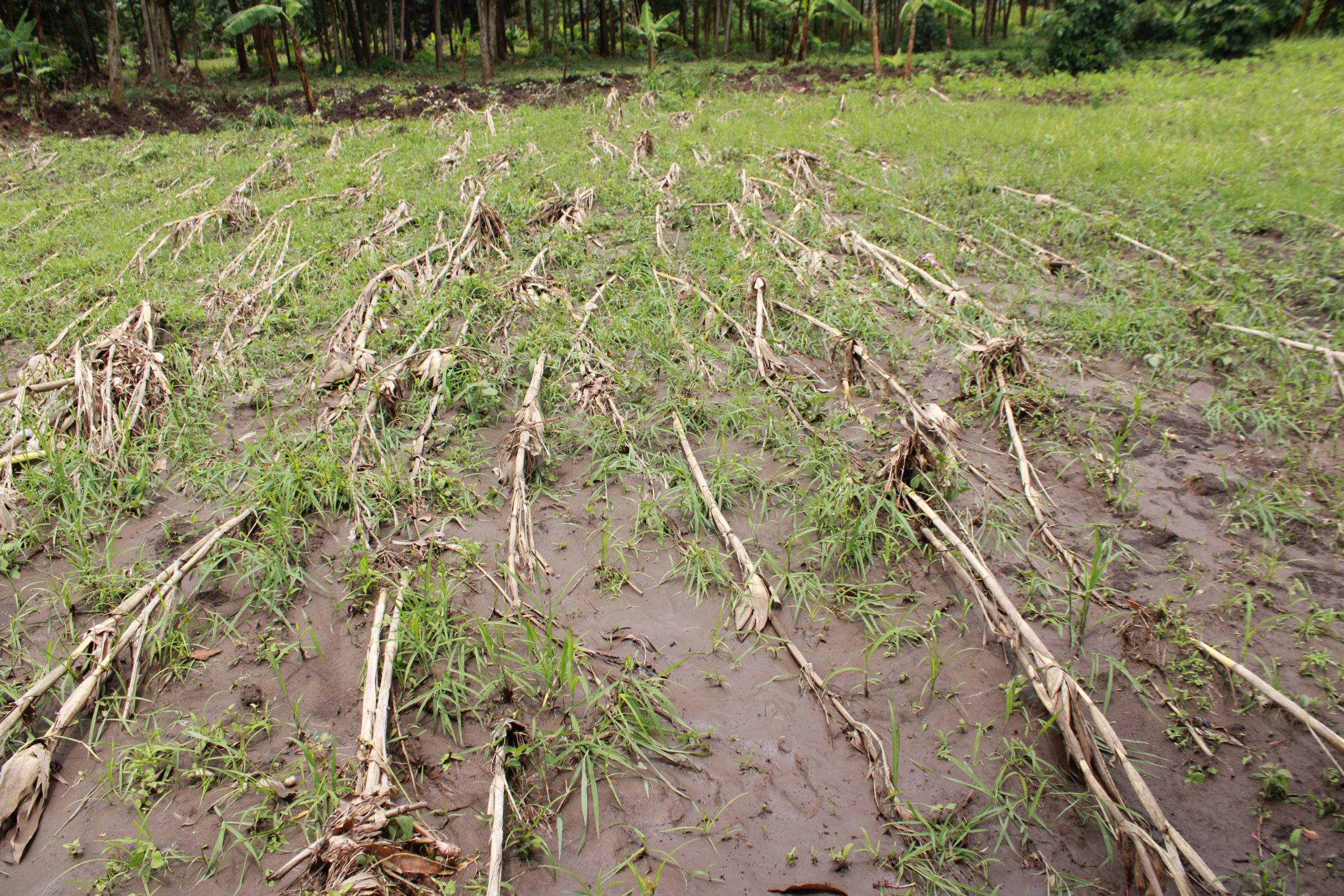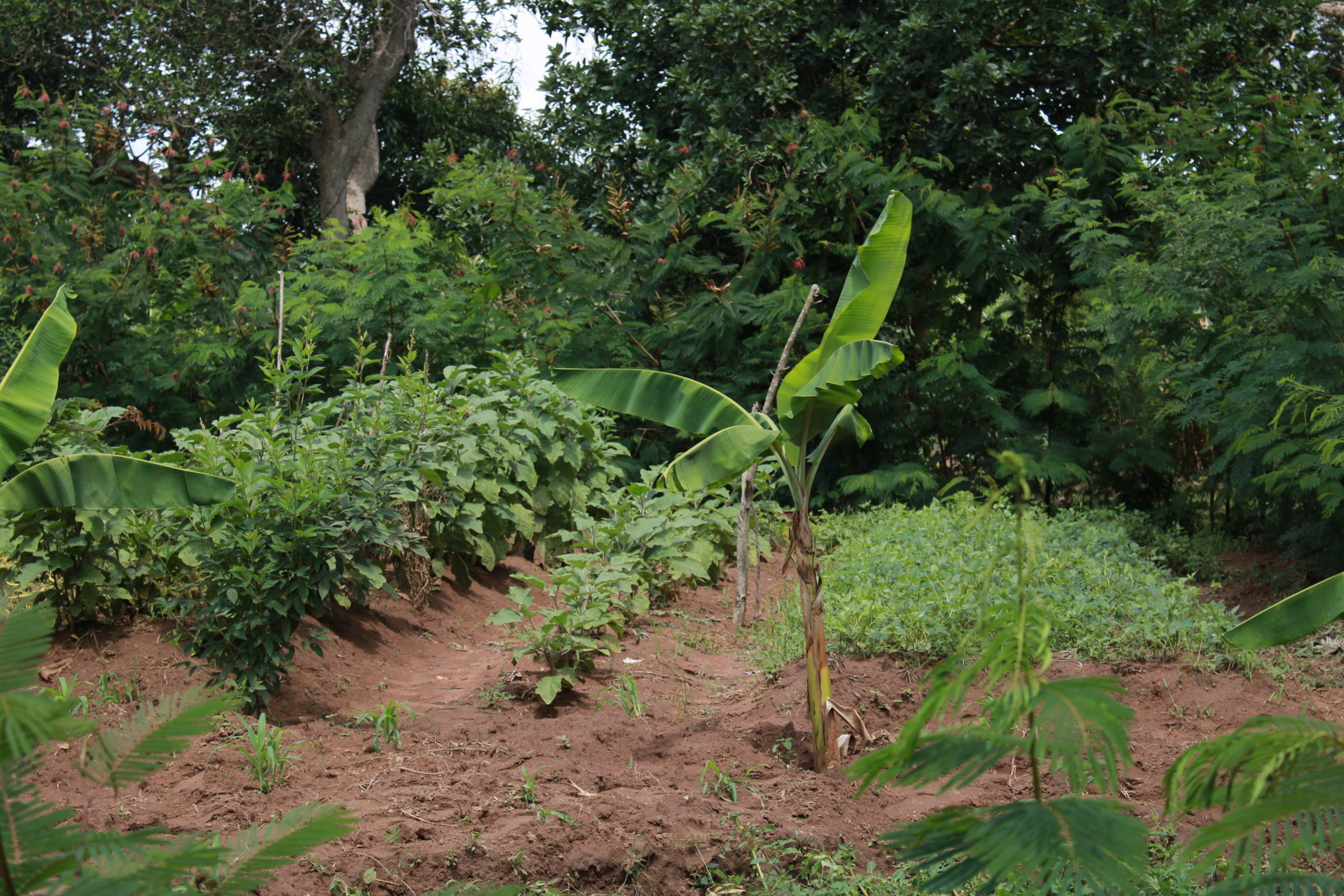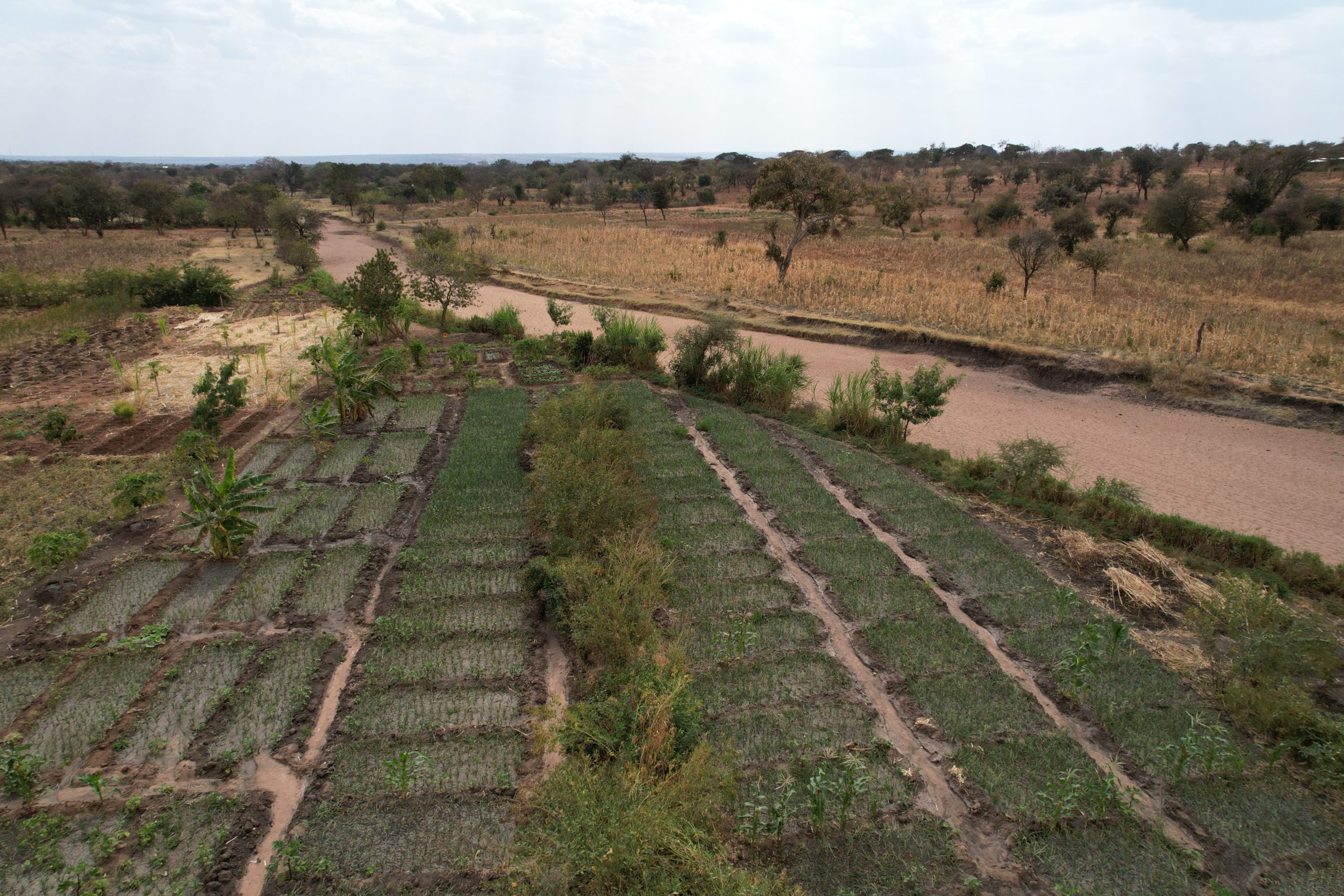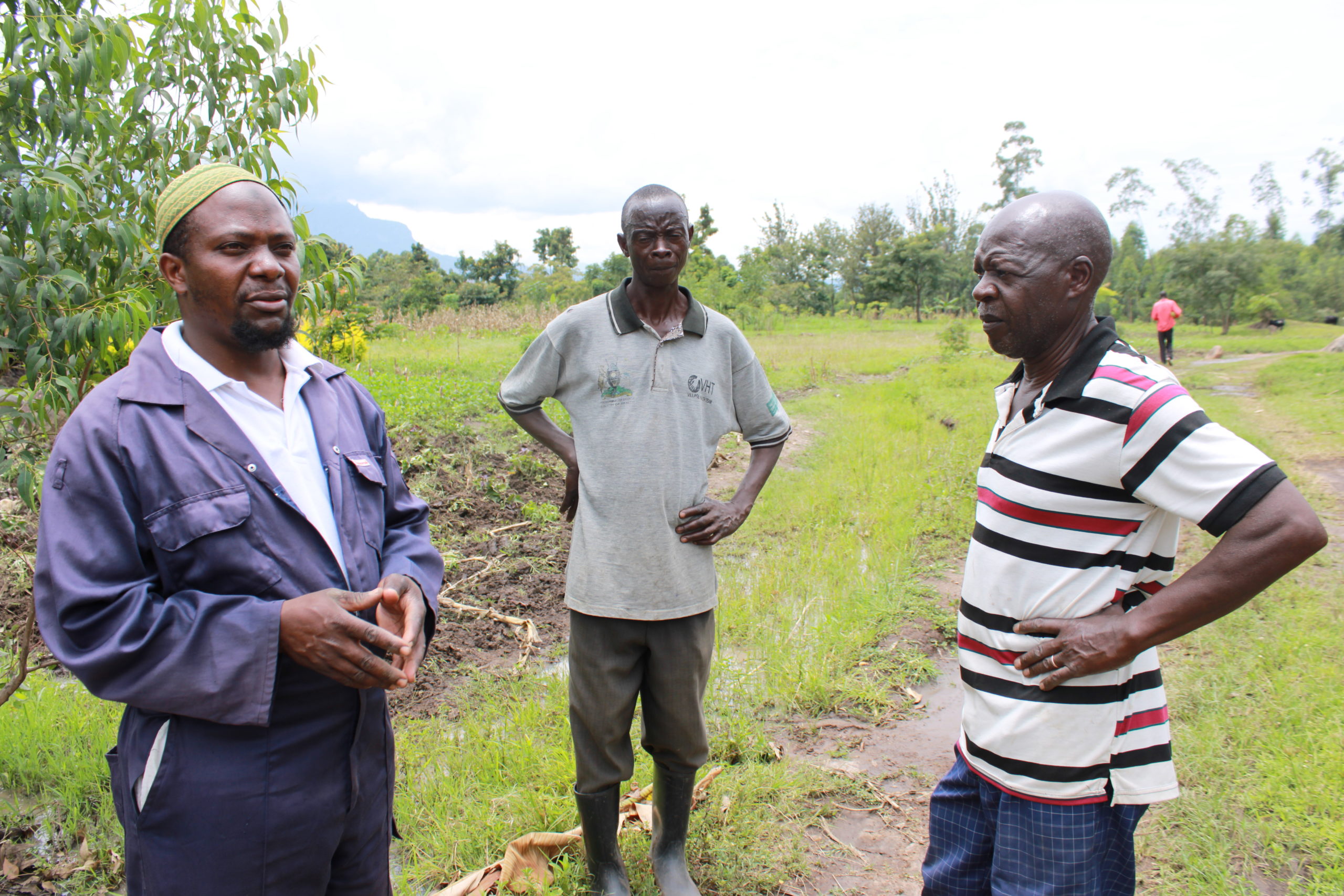Farmers in Eastern Uganda are looking to the future as they continue to recover from unseasonal flooding and landslides in July and August.
“It normally floods [earlier], but this year that changed and so we were not expecting it at all,” says farmer Edward Mukhwana.

Unseasonal flooding and landslides washed away crops in rural Uganda – affecting hundreds of farmers.
Unseasonal Rains, Devastating Floods
Edward’s farm is in Bumbobi sub county, one of the regions most affected by the rains. Trees for the Future (TREES) works with 393 farmers in Bumbobi and thousands more across Mount Elgon, training them to implement agroforestry techniques to create diverse Forest Gardens.
Forest Gardens are made up of thousands of trees and dozens of species of food and resource crops. Not only do Forest Gardens lift families out of hunger and poverty, they also mitigate the effects of climate change and help farmers withstand extreme weather events like flooding.

“Through diverse tree planting and intercropping, farmers adopt land and water management techniques that stabilize soils, infiltrate water back into the ground, and redirect flood waters; thus, protecting the valuable topsoil and crops within the garden,” explains TREES Director of Programs, Brandy Lellou. “But if the land upslope of the Forest Garden is not managed or protected in a similar way, and the trees are still young, Forest Garden farmers are not immune to heavy rains, flooding, and the danger of landslides.”
As world leaders return home after promises made at COP 27 in Egypt, the Forest Garden Approach offers a proven mitigation technique to landowners severely impacted by climate change. The more established a Forest Garden is, the better it can stand up to dramatic rain events. TREES’ recent drone imagery of work in Tanzania shows how well a living fence and earthworks techniques help a farmer protect their land from seasonal rivers.

Located on the shores of a seasonal river, this Tanzanian farm is protected by flood waters thanks to its living fence and strategic earthworks.
According to the National Environment Authority (NEMA), the Mount Elgon region is reported to have the highest occurrence of landslides and floods in the country. NEMA attributes the increased frequency of these disasters to climate change effects. According to a Uganda Police Report from August, hundreds of farmers in the Mount Elgon region lost crops and property in the late July and August floods.
“The water carried away everything,” says Edward.

Forest Garden farmer Patrick Nathion (right) and other affected farmers meet with TREES staff to discuss recovery efforts.
Resilient Land & a Supportive Community
Edward is one of six farmers enrolled in TREES’ Forest Garden training program who reported substantial losses from the flooding. But they haven’t lost hope.
“Luckily, we have another piece of land that is far from the stream that normally overflows. We shall be shifting our garden there,” says Edward’s daughter Doreen Masibo. “Trees for the Future is working with us to restore the gardens while providing us with more seed.”
Thanks to support from individual donors and corporate sponsor Ecologi, TREES raised more than $43,000 in response to the floods. The funds will go toward replacing the lost trees and crops for farmers like Edward. They’ll also help fund TREES’ plans to work with the local government to plant more trees on the hillsides in Mount Elgon, upslope from farmers’ fields, further stabilizing soils in the region.
Hopeful Farmers
Patrick Nathion was also hit hard by the floods. But, like his Forest Garden, he is resilient. He is focused on picking himself up and working harder for his family.
“Farming is our life so we have to keep on pushing. We are hopeful that when the rain reduces, we shall go back to normal and replace the lost crops,” Patrick shared shortly after the floods.
“Thank you to all the TREES supporters who contributed to our flood relief efforts here in Uganda,” says Uganda Country Director Ivan Tumuhimbise. “Tragedy sets us back a few steps but working together allows us to overcome and achieve lasting solutions.”
By November, rains in Uganda began to subside. Farmers will have a dry period in January and February, giving those affected by the floods an opportunity to reset with help from TREES staff.